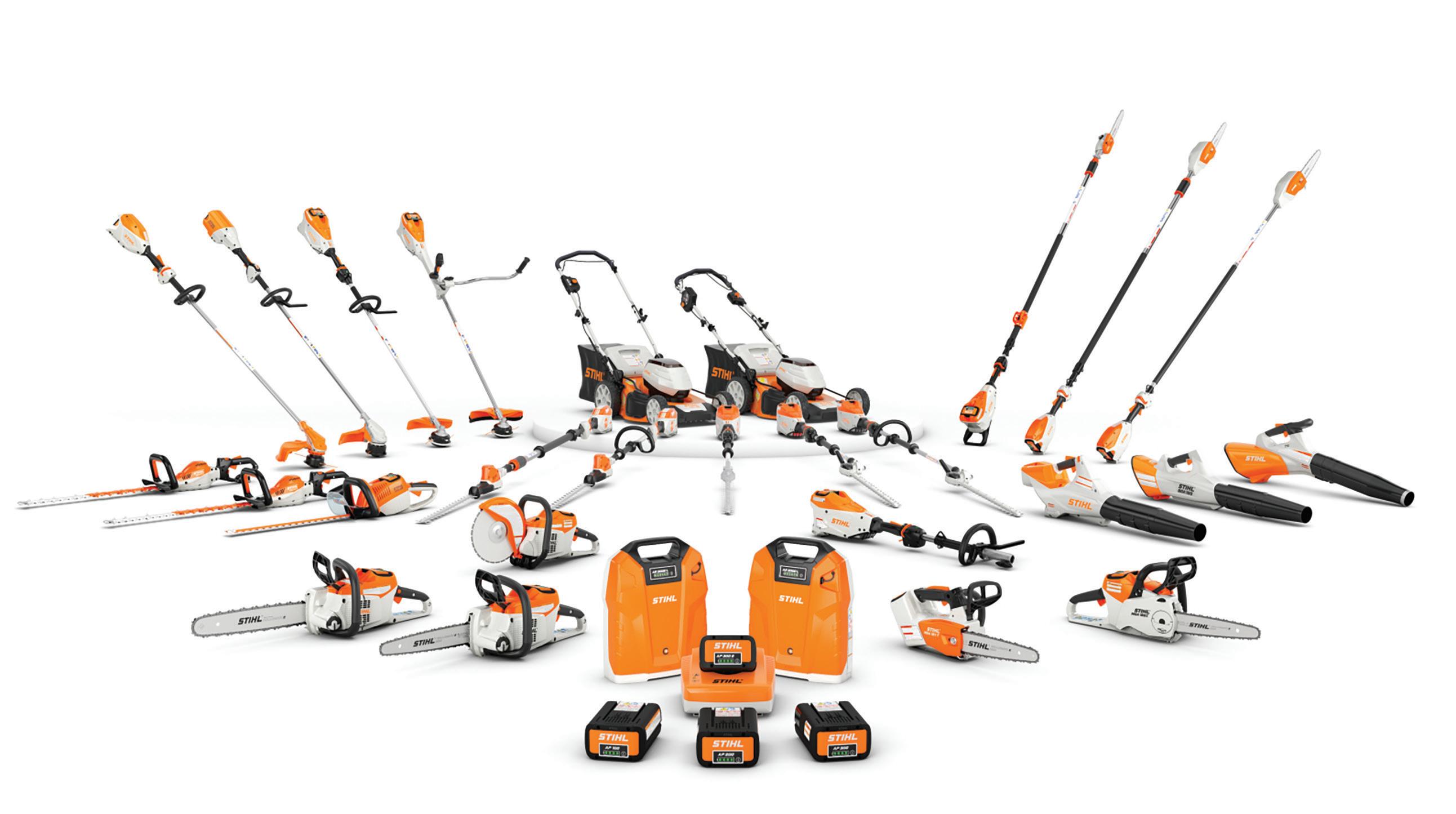



























Spring has finally sprung, and outdoor sports are underway. Hopefully everyone has their pre emerge down and your fertilizer schedules planned. As I am writing this, March 22, spring has been somewhat wet in Middle TN. Tarp pulls, drying out infields, pumping bunkers, and removing surface water are an all too comfortable practice this time of year.
Now is a great time, if you haven’t already done so, for spring aerification. I feel that one of our very best traits as turf managers is flexibility. We can change job assignments, applications, workdays, etc. The one thing we can’t change is Mother Nature. For the month of February, we were 10 degrees above our average temperature and 1¼-inch above average on rain. So, I challenge you to keep that flexibility. Just know that we have no less than 1 or 2 “winters” left in our great state. Way back in 1910, it snowed as late as April 25th. Hopefully, those days stay in the past and we continue to warm up. Today our soil temp was 58 degrees. The long-range forecast looks promising, and I hope you are geared up for another great growing season.
Ryan Storey2024 TTA President
EDITOR
TTA
President
Vice
TTA
SEPTEMBER 30, 2024 / 8:00 AM (EDT)
34th Annual East Tennessee Scholarship & Research Golf Tournament
Cleveland Country Club
OCTOBER 7, 2024 / 9:00 AM (CDT)
2024 MTGCSA Scholarship & Research Golf Tournament Hermitage Golf Course
JANUARY 6, 2025
2025 TTA Conference & Trade Show Embassy Suites / Murfreesboro, TN
TTA
•
•
•
•



Ihave the great honor to serve as the MTGCSA president for the 2024 year. I could not be more excited about the future of our organization and our industry. We have so many talented individuals in our organization, and I look forward to learning from each of you.
“Spring is here.” I am sure what I am about to say might shock many of you; however, I am going to say it anyway. I simply cannot wait until the season arrives! For most of us, spring’s arrival means less focus with many capital projects and gives us time for creative management and turfgrass manipulation (our major responsibility as Golf Course Superintendents).
We, as Golf Course Superintendents, wear multiple hats. This is certainly not news to anyone reading this. The job that we all do daily is very demanding, but also extremely rewarding, especially during the spring when you can see the results of months of demanding
work on your courses. Your board has brainstormed together on creating fun, meaningful continuing education opportunities addressing you and your courses’ needs and we cannot wait to share them with you all. We are also making a strong push this year to get more Assistant Golf Course Superintendents and Equipment Managers involved. I would like to ask each of you to reach out to your assistant(s) and equipment manager(s) and encourage them to take part.
As “the season” is here, and in closing, I would like to remind everyone who has promising prospects/interns or employees, to simply remember…we all started somewhere; the more we educate, lead, and mentor, the better our great industry becomes.
Adam Adkins
MTGCSA President




Not updated since its last revision in 2012, this November 15, the USDA ARS and partner PRISM Climate Group partners at Oregon State University released the muchanticipated 2023 update to the USDA Plant Hardiness Zone Map. The changes reflect a shift to warmer average annual extreme minimum temperatures during the most recent 30-year past period. As in previous versions, the 26 recognized Plant Hardiness Zonal divisions are presented with set temperature ranges based upon F-degree (F) half-zones, which can be searched by Zip
Code. When planning for plant selection, growers are encouraged to remember that microclimate (small-scale) effects occur that can affect success of plants selected to be hardy within any given zonal range distribution.
The new map designations for the US, plus Alaska, Hawaii, and Puerto Rico, can be found at https://planthardiness.ars.usda.gov/, along with Tips For Growers and guidance about using the online map resources and its “on demand” layers.
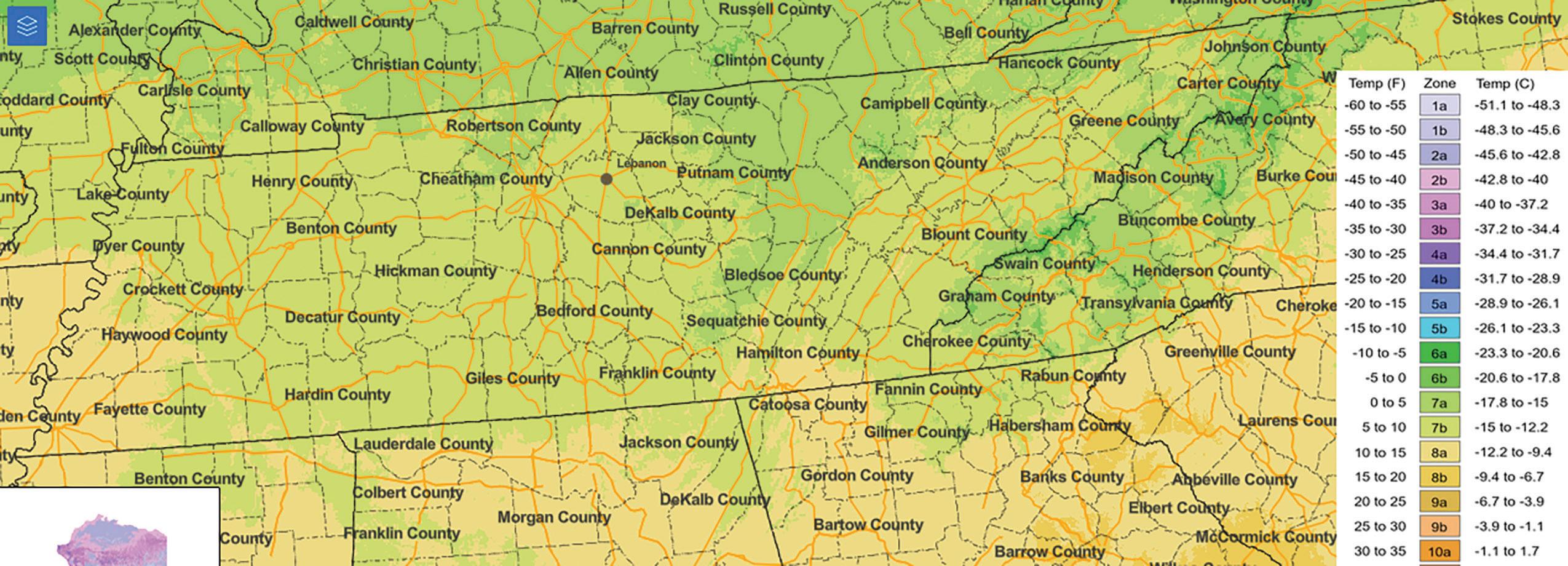
Congratulations to Greyson Key for being awarded State Winner in Turfgrass Management (sponsored by TTA) at the State FFA Convention!






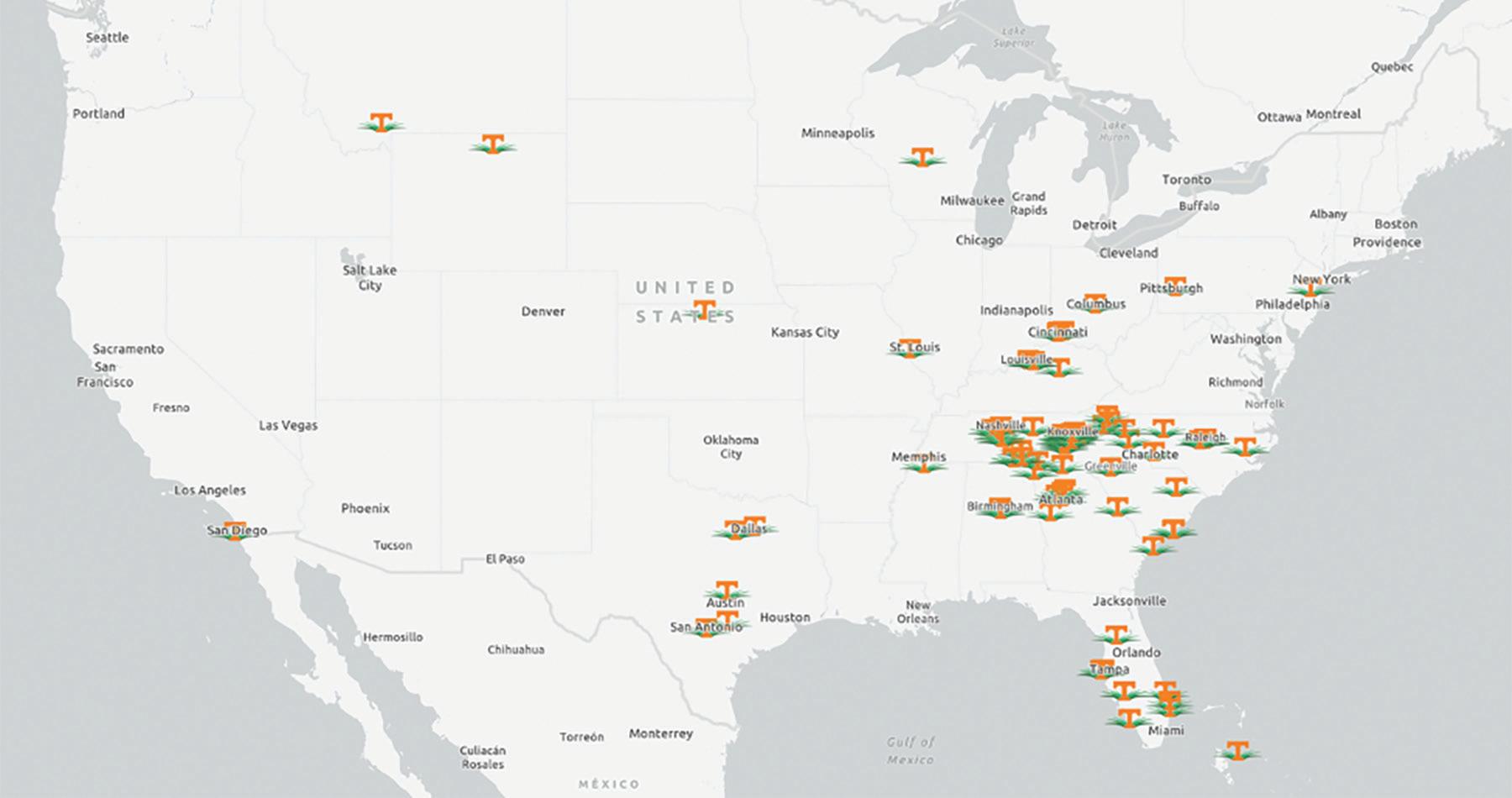
Becky Bowling (Follow me @TNTurfWoman, Follow us @UTTurfgrass) Assistant Professor and Extension Specialist, University of Tennessee OF
InOctober 2023, the UT Turfgrass program launched its UT Turfgrass Alumni network. A brief questionnaire has been used to create a visualizable, public-facing University of Tennessee Turfgrass Alumni map to showcase the reach of UT Turfgrass alumni across the globe and within the industry (Figure 1). Links to the live map and questionnaire are provided at the end of this article. The network allowed us to collect information about our impressive alumni, which we thought may be interesting and fun to share here with our Tennessee turfgrass industry.
The network includes alumni who may have received multiple degrees from UT. To date, 118 alumni have joined the network, with 108 earning a bachelor’s degree, 15 earning a master’s degree, and 10 earning a PhD between 1971 and 2023. Figure 2 depicts trends in graduation numbers among alumni that have joined the network so far. Approximately 74% alumni members majored in Plant Sciences, roughly 21% majored in Ornamental Horticulture and Landscape Design, and the remaining 5% pursued other majors like Ag Business with a minor in turf.




















Network members were asked whether they were willing to share the sector of the industry they work in. Exactly 50% of all members work in the golf industry, while 8.5% work in sports field management, 3.4% work in community turf management (schools, parks, etc.), 2.5% work in lawn and landscape, 3.4% work in turfgrass production, 11.9% work in product sales and distribution, 6.8% work in research and development, 7.6% work in academia, and all remaining respondents work in other areas. This breakdown is depicted in Figure 3, while the geographic distribution of industry impact is shown in Figure 4
The network will create new opportunities for alumni to see and connect with each other, while also providing a reliable mechanism for our UT Turfgrass program to engage alumni in news, events, and other opportunities to stay involved in our program in the future. We look forward to staying connected and keeping track of alumni as they advance in their careers and leave their mark on the global turfgrass industry.
University of Tennessee Turfgrass alumni are also encouraged to check out Vols in Turf, the University of Tennessee Turfgrass Science Program Alumni Foundation. Founded as a 501(c)(3) in 2021 by motivated alumni seeking to connect with and support former, current, and future program graduates. Visit their website at https://volsinturf.square.site or follow them on X @TurfVols
UT Turfgrass Alumni Network Map:
https://myutk.maps.arcgis.com/apps/ instant/basic/index.html?appid=78909 f2f924440979051603c89f3718a
Join the network here:
https://arcg.is/0WPjCW

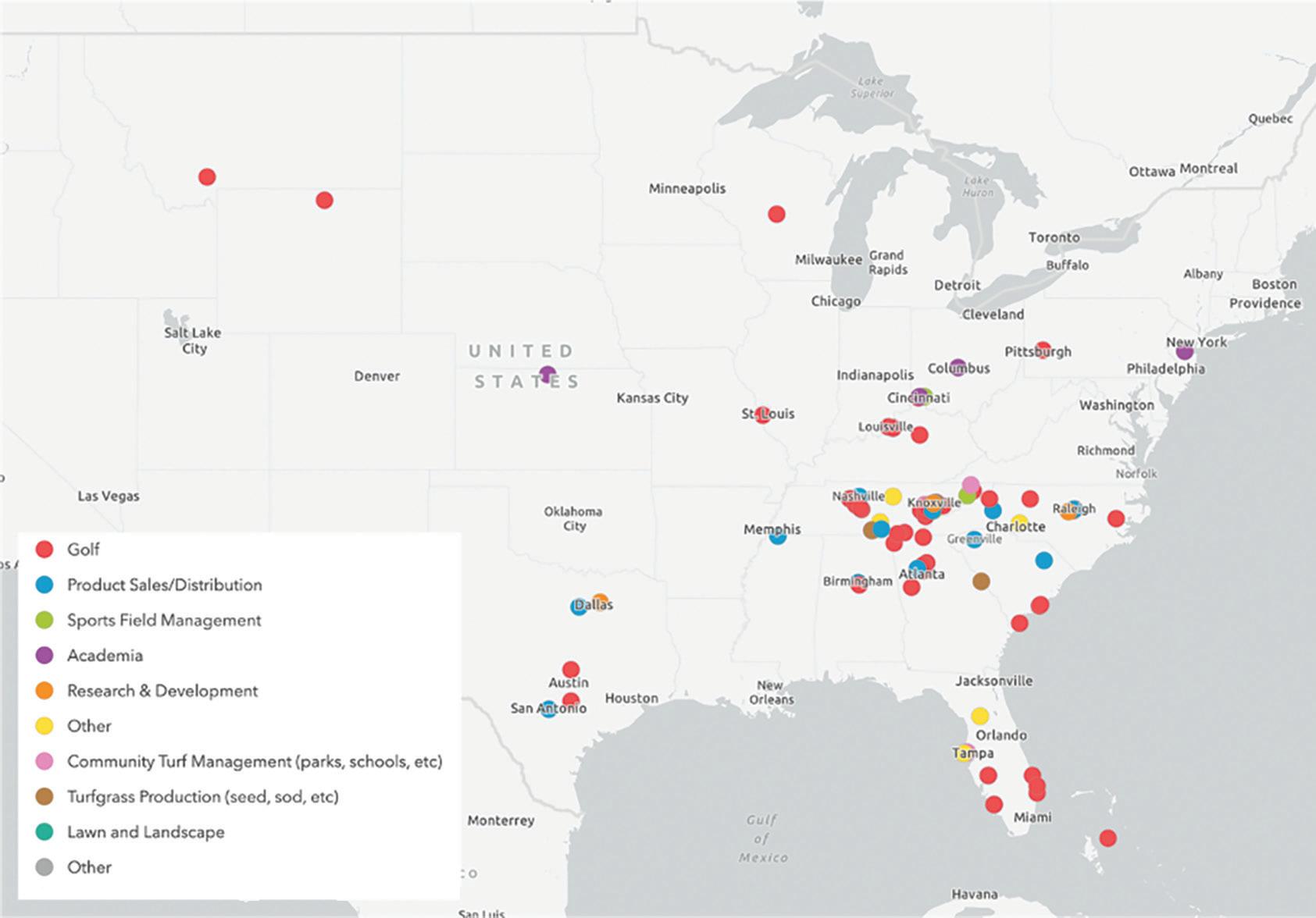




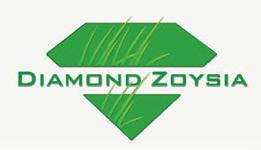





In2023, the UT Turfgrass Science program and UT Extension launched the Certified Lawn Care Professional (CLCP) program for anyone looking to bolster or begin their career in the turfgrass industry. The program, taught by University of Tennessee faculty and staff, provides education and skills needed to effectively establish and maintain turfgrasses using a format that is completely online and self-paced.
In its first year, 107 participants enrolled in the CLCP course and awarded it an average rating of 4.8 out of 5 stars. Participants cite increased customer satisfaction and increased credibility of service as top benefits of earning this certification. When asked to provide feedback on the course, one participant said, “I thought this was a great introduction of the basics of turf for a beginner coming in new to this field or even for field veterans. Excellent work!” Others provided similar comments including: “Good [information], presented in a digestible form.” and “Great course! Easy to understand. Y’all did an awesome job with videos and materials.”
This course is well-suited for anyone who currently manages turfgrass or wants to start a career in the industry. Introductory information is provided on several topics:
• Turfgrass Identification
• Turfgrass Selection
• Soil Fertility
• Water Management
• Planting and Establishment
• Turfgrass Weeds
• Turfgrass Diseases
• Turfgrass Insect Pests
• Integrated Pest Management
• Maintenance and Operation of Turfgrass Equipment
Upon finishing the course, participants are awarded a certificate of completion from the University of Tennessee Extension Certified Lawn Care Professional Program. This certificate is valid for two years and can be renewed thereafter by completing additional education that builds upon the topics covered in the initial course and provides further accreditation for participants.
The fee for this course is $250. Participants may enroll in the course at any time.
For more information and to register, visit tiny.utk.edu/CLCP, or contact your local Extension Agent.

José Javier Vargas Almodóvar Research Associate II
Turf & Ornamental Weed Science
The University of Tennessee 2431 Joe Johnson Drive 252 Ellington Plant Sci. Bldg. Knoxville, TN 37996 (865) 974-7379 jvargas@utk.edu tnturfgrassweeds.org @UTweedwhisperer
Greg Breeden Extension Specialist, The University of Tennessee 2431 Center Drive 252 Ellington Plant Sci. Bldg. Knoxville, TN 37996-4561 (865) 974-7208 gbreeden@utk.edu tnturfgrassweeds.org @gbreeden1
Jim Brosnan, Ph.D. Professor, The University of Tennessee Director – UT Weed Diagnostics Center 112 Plant Biotechnology Bldg. 2505 EJ Chapman Drive. Knoxville, TN 37996 Office: (865) 974-8603 tnturfgrassweeds.org weeddiagnostics.org mobileweedmanual.com @UTturfweeds
Kyley Dickson, Ph.D. Associate Director, Center for Athletic Field Safety Turfgrass Management & Physiology (865) 974-6730 kdickso1@utk.edu @DicksonTurf
Midhula Gireesh, Ph.D. Assistant Professor and Extension Specialist Department of Entomology and Plant Pathology
The University of Tennessee UT Soil, Plant and Pest Center 5201 Marchant Drive Nashville, TN 37211 mgireesh@utk.edu (615) 835-4571
Brandon Horvath, Ph.D. Associate Professor, Turfgrass Science
The University of Tennessee 252 Ellington Plant Sci. Bldg. 2431 Joe Johnson Drive Knoxville, TN 37996 (865) 974-2975
bhorvath@utk.edu turf.utk.edu @UTturfpath
Becky Bowling, Ph.D. Assistant Professor and Turfgrass Extension Specialist
The University of Tennessee 112 Plant Biotechnology Bldg. 2505 E.J. Chapman Dr. Knoxville, TN 37919 (865) 974-2595 Rgrubbs5@utk.edu @TNTurfWoman
John Sorochan, Ph.D. Professor, Turfgrass Science
The University of Tennessee 2431 Joe Johnson Drive 363 Ellington Plant Sci. Bldg. Knoxville, TN 37996-4561 (865) 974-7324 sorochan@utk.edu turf.utk.edu @sorochan
John Stier, Ph.D. Associate Dean
The University of Tennessee 2621 Morgan Circle 126 Morgan Hall Knoxville, TN 37996-4561 (865) 974-7493 jstier1@utk.edu turf.utk.edu @Drjohnstier
Nar B. Ranabhat, Ph.D. Assistant Professor and Extension Plant Pathologist Department of Entomology and Plant Pathology
University of Tennessee UT Soil, Plant and Pest Center 5201 Marchant Drive, Nashville, TN, 37211 (615) 835-4572 nranabhat@utk.edu @UTplantPathoDoc

Randall Keele Sales & Marketing Director 615-708-5219 randall@csfsod.com
The term ‘BEACON’ comes from the UT Alma Mater: “On a hallowed hill in Tennessee / Like a beacon shining bright / The stately walls of old UT / Rise glorious to the sight.”

Not really, no. Our team’s goal was to create a new event that would enhance specific aspects of a field day and other in-person events that we felt were especially rewarding and valuable for everyone involved. Specifically, our goals with BEACON are to:
• Bring members of our industry together with students preparing to embark on their own careers in turfgrass (and related fields) and help fill open positions
• Create a fun opportunity for professional networking and socializing
• Open the door to in-depth and rich discussions about on-going research here at UT
What will the event look like?
We will host a career networking event. The University of Tennessee is proud to have one of the largest pools of undergraduate turfgrass students of any land grant institution in the country. We have also extended invitations for students from several regional colleges to attend and connect with members of the industry.
How will employers participate in Day 1?
• Our goal is that prospective employers will come with open positions and internship opportunities that are available or will soon be available for students.
• After registering, employers will share these opportunities prior to the event. These will be stored in a digital space that students can explore in advance, creating opportunities for purposeful discussions or even interviews during the actual event.
• The afternoon of Day 1 will resemble a career fair with some twists. In May, employers will be able to select from different registration packages depending on the type of space they wish to have to engage with students.
• We will have student engagement activities on site, but hope employers will bring their own versions of this to the event (putting areas, spin-the-wheel, etc). We will end the day with a reception for employers to play trivia and enjoy refreshments in a fun and relaxed atmosphere with students. The evening will allow flexibility for employers to take students out to dinner at their discretion, or simply enjoy Downtown Knoxville.

TACKLE ANY TASK
The battery-powered KMA 135 R KombiMotor has 15 optional attachments, making it the ultimate piece of outdoor power equipment.

(continued)
On Day 2, we will open the doors to our research farm where we plan to have two research field tours in the morning:
1. The Fairway Expedition (golf tour): Hear the latest in weed science, pathology, turfgrass selection research and more as it pertains to golf course management. A September event allows for timely updates from and interactions with our researchers just prior to EOP.
2. Pitch Perfect (sports tour): Get a behind-thescenes look at the FIFA Pitch Research being conducted in advance of the 2026 World Cup plus other on-going research pertinent to safe and sustainable sports field management.
We will end the event with lunch and refreshments before embarking on a fun fall football weekend here in Knoxville!
When and where can I register?
Registration will become available in May. Links to registration will be distributed via TTA , TGCSA, and via our MailChimp account. You can sign up for updates from our program here:
https://mailchi.mp/9ff48c5faad7/ut-turfgrass
Will pesticide points be offered?
No, not at this event. Our team understands earning points is important which is why we offer the UT Turf Tuesdays series:
https://www.tnturfgrassweeds.org/turftuesday
We are also working with several of our county offices to offer an in-person program series this summer titled Beat the Heat, where pesticide points will be offered as well Memphis, Jackson, Murfreesboro, Chattanooga, and Sevierville.
Who can I contact for more information?
Questions can be directed to Dr. Becky Bowling: rgrubbs5@utk.edu






1.
•
•
•
2.
•
•

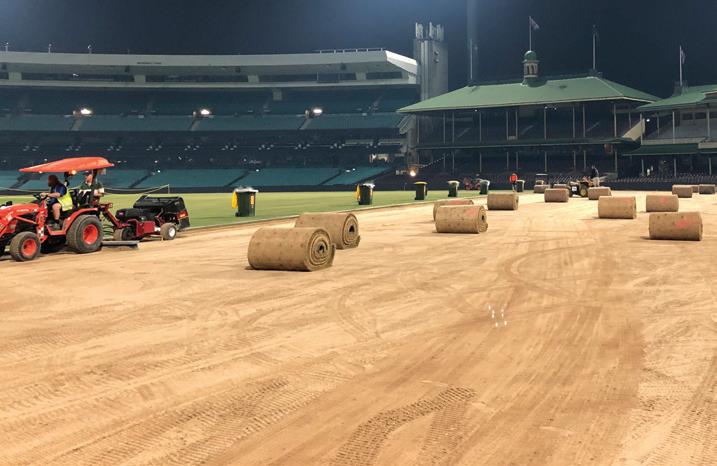
term “biostimulant” has been misunderstood, misused, or misplaced as a potential “miracle cure” in the turfgrass industry, and biostimulant products were often dismissed as “snake oil” or “foo-foo juice” (e.g., sarcastic reference to the mythical foo-foo tree). Some biostimulant products make performance claims substantiated with scientific research, while other products lack direct evidence of their actual benefit.
Dr. Richard Schmidt (Emeritus Professor at Virginia Tech; Blacksburg, VA; and Penn State alum) is considered the pioneer of biostimulant research in turfgrass science. Dr. Schmidt defined biostimulants as follows: “Biostimulants are organic materials that when applied in small or minute quantities enhance plant growth and development.” The use of the word “minute” in this definition is intended to differentiate the fact that these substances, compared to traditional nutrients and/or soil amendments, elicited a measurable and beneficial response at much lower application rates. In his early work, Dr. Schmidt considered the plant biostimulant effect was attributed to a hormonal response and the plant protection effect against abiotic stress as attributed to antioxidant production, and both of those effects made possible from low concentrations of exogenous applications. Dr. Schmidt also used the term “metabolic enhancers,” but the important distinction was that something positive was happening to the plant beyond what mineral nutrition supplied.
More recently, plant biostimulant is defined as “any substance or microorganism applied to plants with the aim to enhance nutrition efficiency, abiotic stress tolerance, and/or crop quality traits, regardless of nutrient content.” The term “plant biostimulant” often is used to describe the various categories of compounds and substances used in these products: plant growth hormones (e.g., abscisic acid, auxins, cytokinins, gibberellic acid, etc.), microorganisms (e.g., Bacillus spp., Trichoderma spp., mycorrhizae, etc.), amino acids, humic and fulvic acids, plant defense-activating substances, plant growth-promoting compounds, vitamins, pigments and oils, soil amendments and soil conditioners, composts and compost teas, and more.
The European Biostimulant Industry Council (EBIC; https://biostimulants.eu) defines biostimulants as: “Agricultural biostimulants include diverse formulations of compounds,
substances, and other products that are applied to plants or soils to regulate and enhance the crop’s physiological processes, thus making them more efficient; biostimulants act on plant physiology through different pathways than nutrients to improve crop vigor, yields, quality and post-harvest shelf life/conservation.”
The EBIC also has a functional definition of plant biostimulants as follows: “A material which contains substance(s) and/or microorganisms whose function, when applied to plants or the rhizosphere, is to stimulate natural processes to benefit nutrient uptake, nutrient efficiency, tolerance to abiotic stress, and/or crop quality, independently of its nutrient content.” Of note, the EBIC’s functional definition expands beyond the ‘plant’ to also include the ‘soil’ (e.g., rhizosphere).
The Association of American Plant Food Control Officials (AAPFCO; https://aapfco.org) defines biostimulants as: “Any substance or compound other than primary (e.g., N, P, and K), secondary (e.g., Ca, Mg, S), and microplant nutrients (e.g., Fe, Cu, etc.), that can be demonstrated by scientific research to be beneficial to one or more plant species when applied exogenously; …a substance or material, with the exception of nutrients or pesticides, which has the capacity to beneficially modify plant growth.” Of note, the ASPFCO definition of biostimulants refers to the term “beneficial substance.”
Biostimulants are often categorized by “what they are” (e.g., how are these substances or compounds or component materials described chemically or physically?) and “what they do” (e.g., how do these substances or compounds benefit the turfgrass plant or the turfgrass soil/rootzone?). The turfgrass practitioner and stakeholder would benefit from knowing not only what a biostimulant is actually composed of, but how those commercially available biostimulant products benefit turfgrass management programs. Therefore, a proposed classification method or strategy for listing biostimulants in turfgrass is presented in Table 1 Overall, biostimulants are listed as primarily targeting the plant or soil/rhizosphere, then further organized by category to describe their composition, followed-by active or functional ingredients (e.g., compounds, substances, other descriptive terms) listed within each category. Examples of common names for biostimulant products are listed for each category.
Category 1
I Phytohormones
II Biopolymers, protein hydrolysates, and other N-containing compounds
Examples of active or functional ingredients
Abscisic acid
Auxins
Cytokinins
Ethylene
Gibberellic acid
Others
Amino acids (e.g., proline, etc.)
Antioxidants
Betaines
Chitin
Enzymes
Fatty acids
Non-protein amino acids
Peptides
Polyamines
Polysaccharides
Vitamins
Others
III Other botanical or synthetic bioactive compounds
1 Category based on chemical and/or physical composition.
Elicitor compounds, Induced systemic resistance compounds, Plant defense activator compounds,
Others
algae, indoleacetic acid, benzyl-adenine, gibberellins, kelp, seaplant, seaweed extracts, and more
amino acids, chitosan, glycine betaine, and more
acibenzolar-S-methyl, jasmonic acid, salicylic acid, and more
2 Broad or general name of a biostimulant product listed; no product trade name provided. Should an additional column list the specific biostimulant function of those biostimulant products, and/or should the manufacturer include that information on their product label?
IV Humic substances
V Organics
VI Inorganics /minerals
VII Biologicals/microbials
VIII Soil surfactants 3
IX Other naturally derived or synthetic bioactive compounds
Fulvic acid Humic acid leondardite, and more
Biochar
Bio-extracts
Bio-fertilizers
Composts/compost extracts
Soil amendments/supplements
Others
Al, Co, Na, Mo, Se, Si, etc.
Phosphites
biochar, composts, compost teas, kelp, seaplant, seaweed extracts, vermi/worm extracts, and more
Others phosphite salts, and more
Beneficial fungiArbuscular mycorrhizal fungi
Trichoderma spp.
Others
Beneficial bacteria -
Bacillus spp. and other species
Plant growth promoting rhizobacteria
Others
Other beneficial organisms Many
Elicitor compounds
Induced systemic resistance compounds Plant defense activator compounds
Others
1 Category based on chemical and/or physical composition.
2 Broad or general name of a biostimulant product listed; no product trade name provided. Should an additional column list the specific biostimulant function of those biostimulant products, and/or should the manufacturer include that information on their product label?
3 Proposed location of soil surfactants as a category if some of those soil surfactants are to be considered or included as biostimulants.
Plant hormones or phytohormones are considered chemical messengers in plants. They are referred to as ‘signal molecules’ that occur in very low concentrations, and are vital to plant growth and development, and regulation and function of many physiological processes. The most common phytohormones utilized as plant biostimulants are abscisic acid, auxins, cytokinins, ethylene, and gibberellic acid.
Abscisic acid is associated with water regulation in plants and is associated with the plant’s ability to mitigate abiotic stress from drought, salinity and temperature. Auxin is responsible for phototropism (e.g., shoots growing upward, toward the light) and gravitropism (e.g., roots growing downward into the soil). Indole-3-acetic acid (IAA) is the most common naturally occurring auxin and included as the auxin component of many biostimulant products to promote root viability and drought tolerance. Cytokinins are involved with plant growth and development and stress-response processes, and in particular with cell division and delaying of leaf senescence (e.g., plant senescence is the process of aging in plants; plants have both stress-induced and age-related developmental aging). This delay of leaf senescence or “stay green” effect is a plant stress response in which cytokinins inhibit the action of senescence-inducing enzymes, slowing the degradation of chlorophyll, and maintaining photosynthetic rates and root viability. An example of a commonly used biostimulant product in this category is seaweed extract, also referred to as seaplant or kelp. Gibberellic acid controls important plant growth functions such as cell elongation and stem growth, seed germination, flower development, and flowering time. While abscisic acid, auxin, cytokinin, and gibberellic acid exist in the plant in liquid form, ethylene is a gaseous phytohormone that regulates plant growth (e.g., the development of leaves, flowers, and fruits), senescence, response to environmental stresses (e.g., heat and freezing stresses), and often interacts with other phytohormones.
Examples of compounds in this category include amino acids, and they are considered the “building blocks” for proteins, enzymes, nucleic acids, antioxidants, and other secondary compounds. The L-form of amino acids are assimilated by plants, and these L-amino acids and short-chain peptides are reported to increase plant N uptake, increase root mass, activate natural defense mechanisms, and enhance photosynthesis.
This is a “placeholder” category for plant-directed compounds not yet described or fully understood, or for compounds that do not fit the description of the other categories. An example of an organic compound in his category is acibenzolar-S-methyl, which is a synthetic analog of salicylic acid and is referred to as a “plant defense activator” because it produces an induced systemic resistance response and thus activates a plant’s natural defense system.
Humic substances (e.g., humic and fulvic acids) are natural decomposition constituents of soil organic matter, typically derived from leonardite (a natural form of humates), associated with “brown coal” deposits. Benefits of these compounds increased soil nutrient and water holding capacity (e.g., increased cation exchange capacity), prevention and reduction in leaching of soil nutrients, chelators of organic molecules and minerals facilitating increased plant root absorption, enhanced soil enzyme and metabolic activity.
Traditionally, organic amendments such as peat moss, manures, biosolids, composts, and other materials have been added to sand-based turfgrass rootzones to increase water and plant nutrient retention and availability. Ideally, organic materials and substances applied to turfgrass soils should be sufficiently decayed and biologically stable and decompose very slowly so their benefits or positive impact can be expressed over a long time. Recently, biochar has gained interest due to a high carbon content, porosity, and stability (e.g., extremely resistance to microbial degradation). Vermicompost extract also is popular for improving the biological and physical health of the turfgrass rootzone.
Many inorganic/mineral compounds and products can be placed into this category. Phosphite (PO33-) of has become the most common inorganic compound incorporated into many turfgrass management programs, particularly with disease management and suppression.
Numerous biological/microbial organisms can be placed into this category. Arbuscular mycorrhizal fungi form a mutually symbiotic relationship with plant roots, in which roots provide carbohydrates for the fungi and the fungi aid in access and transfer of nutrients and water to the plant roots, and also aid in water balance, and abiotic and biotic stress tolerance or protection. Bacillus spp. is the most common example of a bacterial organism utilized for biological control of plant pathogens, and this is achieved via direct suppression by the release of antipathogen compounds, or via indirect mechanism such as outcompeting the pathogen for space or food, or for activating or inducing plant defense systems. Current research is exploring plant growth promoting rhizobacteria and their ability to confer beneficial effects on plant growth and development by increased nutrient uptake (e.g., nitrogen and phosphorus), synthesizing plant growth promoting compounds, activating abiotic and biotic stress tolerance mechanisms, and possibly more.

On fairways and greens worldwide, John Deere has a tradition of excellence. We’re trusted by the best because only John Deere can provide everything your golf business needs including in-depth knowledge and attentive support:
• Exceptional golf course mowers and specialty equipment.
• Reliable parts and ser vice from your local dealer.
• Smart, connected technology for equipment and course management.
• Financing for it all — with solutions tailored to your course from John Deere Financial.
Agriculture, horticulture, and turfgrass industry practitioners commonly refer to soil surfactant products as “wetting agents.” Should all or some specific soil surfactants be listed as a biostimulant? Can soil surfactants “behave as biostimulants,” or “facilitate a biostimulant effect” when applied to turfgrass rootzones? Surfactants are primarily and traditionally
used for water conservation, improving irrigation use efficiency, and ameliorating soil water repellency. The utilization of soil surfactants is considered the number one water conservation strategy among golf course superintendents in the USA. Current research indicates certain diverse rootzone processes can be “engineered” by surfactants to optimize rhizosphere and soil biophysical, microbiological, and chemical properties ( Figure 1 ).
Figure 1. An example of a beneficial application program of Excalibur soil surfactant (AquaAid Solutions; Rocky Mount, NC) on a creeping bentgrass putting green subjected to drought stress. The volumetric water content status of the rootzone was improved to optimize the function of the rhizosphere. A: Illustration depicting good or optimum root-to-soil contact in Excalibur-treated plot. B: Illustration depicting poor root-to-soil contact in untreated plot. C: Healthy and dense turfgrass visible within the plot, indicating good root-to-soil contact and access to water and nutrients. D: Drought stress visible within the plot, indicating roots with compromised physiological function.
Images in A and B from: Weil R.R. and Brady, N.C. 2017. The nature and properties of soils. 15th ed. Pearson Education, New York City, NY. Images in C and D from: Duddek, P., Carminati, A., Koebernick, N., Ohmann, L., Lovric, G., Delzon, S., Rodriguez‐Dominguez, C., King, A., and Ahmed, M.A. 2022. The impact of drought-induced root and root hair shrinkage on root–soil contact. Plant Physiology 189:1232-1236.


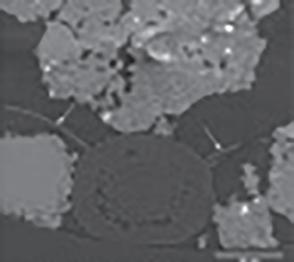


Safe – Non Phytotoxic – Tank-mix Compatible No Resistance - 25b EPA Exempt Fungicide

BioPlex Pathogen POWER+ provides an exciting opportunity for the golf course superintendent or lawn care owner operator to find an inexpensive, dependable and high functioning disease control substitute to include in a fungicide rotation. And yes, without sacrificing performance results, compatibility or the bottom line (As low as $25-$49/acre per application).
BUDGET SENSITIVE VALUE… BROAD SPECTRUM - HIGH CONTROL - LOW COST ON SALE TODAY – EASY ON-LINE ORDERING AT BIO-PLEX.COM
Labeled for 36 Turf Disease Pathogens: Anthracnose, Fusarium, Phytophthora, Powdery Mildew, Pythium, Brown Patch, Dollar Spot, Verticillium, Agrobacterium, Bacterial Blast, Pseudomonas, Mosaic Viruses, and More

Agronomist - Tech Support
717-917-5126 (Voice - Text) bioplex@earthlink.net





This category is a “place-holder” for soil-directed compounds not yet described or fully understood, or for compounds that do not fit the description of the other categories. Before considering a biostimulant product or program, a prudent and responsible turfgrass manager should ask “What is in it?” and “What does it do?” (Table 2).
The purpose of asking questions about biostimulants is to help guide the turfgrass manager towards making the best fact-based agronomic decision. More questions are helpful to further explore a biostimulant’s intended use (e.g., abiotic or biotic stress, plant nutrient efficiency, etc.) and ability to produce or facilitate the desired turfgrass response (Table 3).
A biostimulant or combinations of biostimulants may provide turfgrass management options to maintain or improve turfgrass quality and function during abiotic and/or biotic stress conditions.
1. Is this product needed in my situation?
2. Are independent test results available?
3. What is the magnitude of response?
4. Does this product provide consistent results?
5. What is the duration of response?
6. Are there better alternatives?
7. Do benefits justify the costs?
8. Should I try this product on a trial area?
1 Source: Carrow, R.N. 1993. Eight questions to ask: Evaluating soil and turf conditioners. Golf Course Management
Table 3. What are key questions golf course superintendents, greenkeepers, course care managers, sports field managers, and lawn and landscape professionals should ask when considering a biostimulant product?1
• What’s in it? What is the product’s composition or active ingredient(s) or component(s)?
• What is its function? How does the product claim to benefit turfgrass?
• Will the product function in all climates, soil types, turfgrass species, and turfgrass cultural practices and management programs?
• Does the product function best to help with abiotic (e.g., drought, heat, salt) or biotic (e.g., insects, pathogens, traffic) stresses?
• Where’s the data? What does the research-based data show that the product does when the product is applied to turfgrass? Were the effects both qualitative and quantitative in replicated field and/or controlled greenhouse research?
• Does the manufacturer have clear research-based data showing that all or most of the product’s active ingredients are essential to its function? Does the data show how individual ingredients, when tested against the formulated product, no longer provide the functional benefit?
1Adapted from: Fidanza, M., Kostka, S., Ervin, E., and Bigelow, C. 2019. The European Union’s view on biostimulants: What may be coming our way. Golf Course Management 87(9):58-62.
Moderating and mitigating these stresses are an important strategy to establishing and maintaining healthy, resilient, and sustainable turfgrass. Therefore, should a biostimulant product or program become a valuable component of turfgrass management? The answer to that question may depend on what exactly the turfgrass practitioner wants to accomplish (e.g., better rooting, better tolerance of heat or drought stress, improved recovery from heat or drought stress, traffic tolerance, turf recovery, disease prevention, turf recovery from disease, better color or visual quality, better playability, etc.).
Regardless of the biostimulant product or strategy it is important to note that biostimulants are not a substitute for essential mineral nutrients and a sound agronomic-based turfgrass management program. If the goal is to include or incorporate biostimulants as part of an overall plant and soil health program, then the research in turfgrass ecosystems has demonstrated that they must be applied in advance of those abiotic and biotic stresses to optimize their benefits. There are many exciting innovations on the nearby horizon and evidence-based efforts will lead the way toward a better understanding of how biostimulants will help maintain and improve plant and soil health. Today, much more scientific research is focused on the development, evaluation, use, function, and benefits of biostimulants for sustainable agronomic practices in intensively managed amenity turfgrass ecosystems.
Source: Fidanza, M., C. Bigelow, S. Kostka, E. Ervin, R. Gaussoin, F. Rossi, J. Cisar, F.D. Dinelli, J. Pope, and J. Steffel. 2023. Advances in biostimulants in turfgrass. In Fidanza, M. (Ed.), Achieving Sustainable Turfgrass Management. Burleigh Dodds Science Publishing; Cambridge, UK. p. 469-501.



Each year, TTA recognizes a member who has diligently served the industry, the association and the individuals he encounters throughout the course of his career. Bob Hogan has exemplified that spirit of service both inside and outside of his work in turfgrass. He has served not only on the Board of TTA, but also as a preacher, a County Commissioner and Assistant Mayor. With a well-rounded list of volunteer roles, as well as founding The Hogan Company, he has certainly influenced a great number of people, not least of which are younger generations of turf professionals.
Our conversation with Bob Hogan upon his recognition as the 2024 Tom Samples Professional of the Year Award was a great review of his years as an active member of TTA. Early in the conversation he offered a warning, “I’ll try to stick to talking, not preaching.” And while he certainly shared a lot of invaluable wisdom, he did stick to talking, mostly about the relationships he built and how so many fellow members had a lot to share or teach.
Mr. Hogan is also quick to share his family’s accomplishments. His wife Connie served as a local County School Board Member and has served statewide for the School Board Organization. His daughter is the Principal of Greenbrier Elementary and Bob and Connie have two granddaughters, Faith and Mary Brynlee.
Mr. Hogan’s impact as a servant leader has left a wonderful legacy in both his personal and professional life, and we thank him for his years of hard work!


In just 7 years, over 1.5 billion square feet of TifTuf has been installed on residential and commercial landscapes, golf courses, and collegiate and professional sports fields across our country. As a result, over 46.5 billion gallons of our precious water resources have already been saved . TifTuf has absolutely changed the face of the American landscape! www.THETURFGRASSGROUP.com

I would like to thank the TTA for giving me The Tom Samples Professional of the Year Award. When Chris called, I thought he was kidding, but he wasn’t. I was totally surprised, humbled, and yet honored to receive such an award that was named after my dear friend, Dr. Tom Samples. I was even more grateful knowing that he was there to give me this award. Thanks again, my friend.
I have been a member of the TTA a long time. I even remember the early days when we met at the Music City Sheraton. I have been privileged to serve as an officer and board member for many years of this great organization. We have been blessed to have The University of Tennessee to be our source of information and lead us year after year.
Connie and I started The Hogan Company in 1996. We took $100.00 from our pocket and bought a $79.00 checkbook. We started selling seed with $21.00 in the bank. Our first bag of seed was sold to ACE Hardware, a bag of creeping red fescue. Since the start of our business, Stephen Callis, our son-in-law, came on board and sales have been super. We have sold millions of pounds of seed all over the United States.
Our Mission Statement is, “We will buy, sell, and consistently deliver the finest quality seed available to turf and forage customers of Kentucky, Tennessee, and the U. S. We will only offer products that will protect our environment and enhance our communities.” Thanks to all our customers. God is GOOD.
As I stated at our TTA Annual Meeting, if you are a young turf manager, please get to know some of the older members of TTA. We will help you not only to become better turf managers, but we will also show you how to become a better person by sharing with you the wisdom we have received from God by walking the roads of life that you will soon walk.
Now, the rest of the story. What I didn’t share at the Annual Meeting is for us old folks. Those of us that have walked the roads of life should reach out to the younger generation and mentor the next group of turf managers and impart to them the wisdom we have received from God due to our age.
I asked the question at the close of the Annual Meeting, why did God destroy all the grass on earth before recreating the new earth? An answer would be, He knew He had the best “Turf Managers” the world had to offer here in the great State of Tennessee!










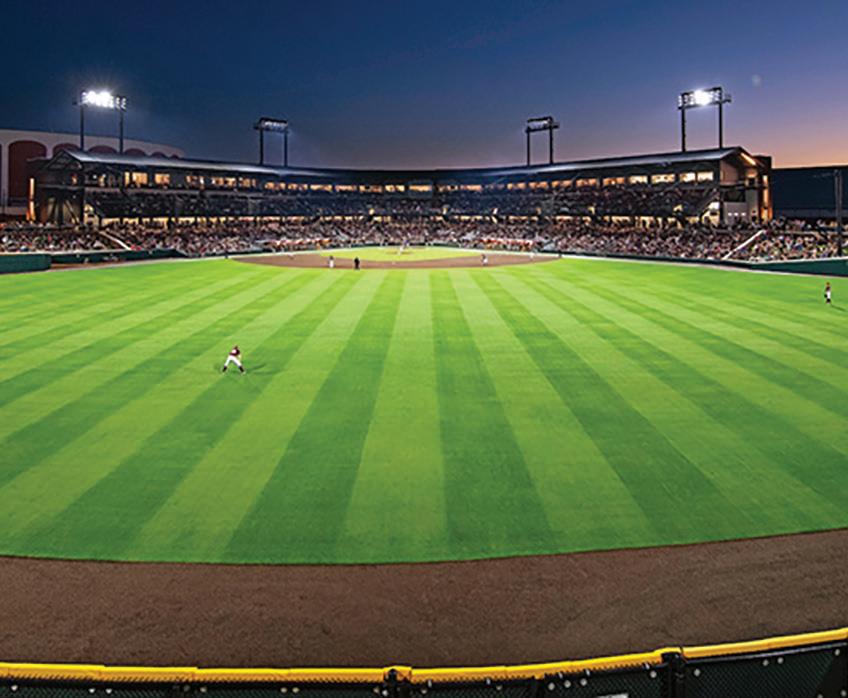

Part 1: Predators, Parasitoids and Pathogens
By Alfred Daniel J,Kripa Dhakal, and Karla M. Addesso Tennessee State University,
Otis L. Floyd Nursery Research Center
Natural enemies of plant pests include predators, parasitoids, and pathogens. These organisms prevent pest populations from reaching outbreak levels in nature. In agriculture production, we often refer to these organisms as biological control agents to differentiate them from chemical controls. In this series, we will discuss the different types of biological control and how nurseries can incorporate biocontrol principles and agents into their production practices.
Not all insects are pests. In fact, of more than one million described insect species, only about 1% are considered serious pests. What about the rest? Some insects help us by keeping pest populations in check. Insects that feed on other insects, often referred to as natural enemies, are classified as either predators or parasitoids (Figures 1–16). Predators actively hunt and feed on other insects. Parasitoids lay eggs on or in other insects. Their young feed on the host insect, eventually killing it and later emerging in their adult form. The difference between “parasit-oids ” and the more familiar “parasit- es ” is that a parasitoid kills its host, while a parasite will leave its host alive. The death of the infested host is what makes parasitoids effective as biological control agents. There are thousands of other non-insect biocontrol agents such as spiders, predacious mites, bats, and birds that all contribute to pest control.








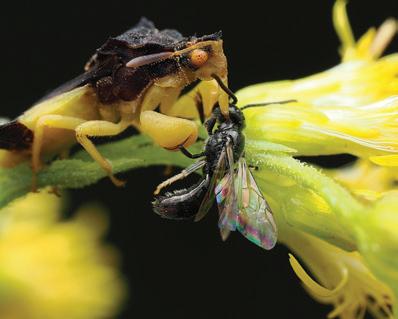



1 to 16. Fig 1. A predatory mite Fig 2a. Salticid spider Fig 2b. Tetragnathid spider Fig 2c. Oxyopid spider Fig 3a. Lady beetle adult Fig 3b. Lady beetle larva with aphids, Fig 3bc. Larva of a different lady beetle species Fig 4. Tiger (ground) beetle Fig 5a. Soldier beetle adult Fig 5b. Soldier beetle larva Fig 6a. Phymata assassin bug adult Fig 6b. Macracanthopsis assassin bug nymph Fig 7a. Syrphid fly larva Fig 7b. Adult syrphid fly Fig 8. Robber fly adult Fig 9a. Lacewing adult Fig 9b. Lacewing eggs on a leaf edge Fig 10. Preying mantid Fig 11. Vespid wasp Fig 12. Tachinid parasitic fly Fig 13a. Megarhyssa Ichneumonid wasp Fig 13b. Braconid wasp adult Fig 13c. Braconid wasp pupae (white balls) on a caterpillar cadaver Fig 14a. Acroclisoides (Chalcidoid) wasp parasitizing eggs Fig 14b. Platygastroid wasp parasitizing eggs Fig 15a. An ant infected by Ophiocordyceps fungus Fig 15b. A fly cadaver infected by Entomophthora fungus Fig 16. A caterpillar cadaver infected by baculovirus.



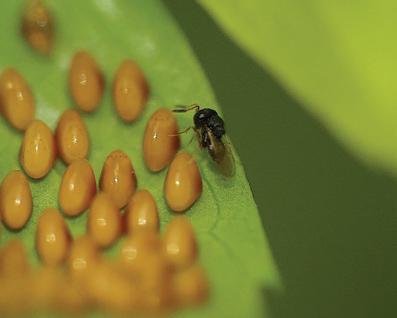

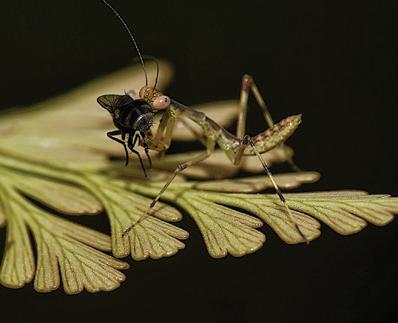









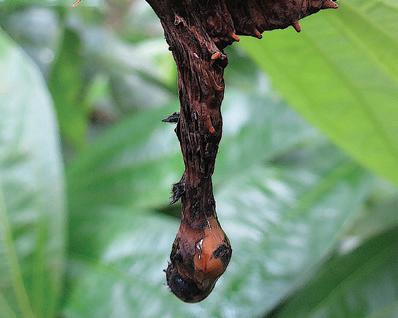
Decreased down time, increased revenue.
The surface is very “puttable.”
The dots are sand that is level with the turf.


DryJect® is a high-pressure, water based injection system that blasts holes through the root zone and fractures the soil profile. Plus, it automatically fills holes as it aerates.
DryJect® makes a big difference in playability … right away!



At RIght: Table 1. List of biocontrol agents and their targets.
Entomopathogenic agents, including fungi, nematodes, viruses, or bacteria, are yet another important group. These biocontrols are comprised of living or killed strains of microorganisms that cause disease development in a variety of arthropod pests.
The main categories of biological control agents can be described within three broad functional groups: predators, parasitoids and pathogens (Table 1). Within the predator group, there are eight orders of arthropods that act as biological control agents in nursery systems. These predator groups include mites, spiders, and several orders of insects (beetles, wasps, lace wings mantids, etc.). As previously discussed, adult parasitoids lay eggs in or on their hosts. The two main insect orders containing parasitoids are flies and wasps. Parasitoid wasps, lace wings (green lace wings in particular), and predatory mites are the three groups that have been successfully developed into commercially available biological control agents and are used widely in greenhouse production.




Plant pests, like us, also can become sickened by disease. Diseases affecting insects, known as entomopathogens, include naturally occurring microorganisms such as fungi, protozoa, viruses, nematodes, or bacteria that are specific to insects (Table 1). Often these diseases can be very specific to a narrow range of insect pests, for example infecting caterpillars but not flies or beetles. Some species and strains of entomopathogens can be produced and formulated as active ingredients in pest control products. These “microbial pesticides” are composed of living or killed strains of microorganisms that directly or indirectly impact pest survival. These strains can generally be applied to crops with the same sprayer technology as chemical pesticides. These products are often most effective when applied early to prevent pest outbreaks, not to clean up heavy infestations after they appear.
In Part 2 of this series, we will discuss ways to promote biological control agents in the nursery by conserving and promoting what is already present in the local environment and methods for augmenting natural populations of predators, parasitoids, and pathogens.
Arachnida
Phytoseiidae (Predatory Mites)
Phytoseiidae (Predatory Mites)
Araneae (Spiders) Salticidae, Tetragnathidae, Oxyopidae etc.
Coccinellidae (Lady Beetles or Ladybugs)
Coleoptera (Beetles)
Predators
Insecta
Hemiptera (True Bugs)
Diptera (Flies)
Carabidae (Ground Beetles)
Cantharidae (Soldier Beetles)
Reduviidae (Assasin Bugs), Anthocoridae (Minute Pirate Bugs), Geocoridae (Big-eyed Bugs), etc.
Syrphidae (Hover Flies)
Asilidae (Robber Flies)
Neuroptera Chrysopidae (Green Lacewings)
Mantodea Mantidae (Preying Mantids)
Hymenoptera (Wasps) Vespoidea (Wasps)
Diptera (Flies)
Parasitoids Insecta
Tachinidae
Superfamily (SF) Ichneumonoidae
Hymenoptera (Wasps)
Pathogens Fungi Hypocreales
Spider mites, broad mites, whitefly, thrips, insect eggs both as adults and larvae. (Fig. 1)
Generalists, particularly of larger bodied insects, both as adults and larvae. (Fig 2. a, b & c)
Aphids, mealybugs, and scale insects both as adults and larvae. (Fig. 3a, b & c)
Generalist predators of insects and snails both as adults and larvae. (Fig. 4)
Adults eat aphids while their soil-dwelling larvae eat beetle and moth eggs and larvae. (Fig. 5a & b)
Adults and nymphs are generalist predators. (Fig. 6 a & b)
Larvae are aphids predators. (Fig. 7a & b)
Adult flies are generalist predators. (Fig. 8)
Larvae feed on soft bodied insects. (Fig. 9 a & b)
Adults and nymphs are generalist predators. (Fig. 10)
Adult wasps hunt caterpillars as food for wasp larvae in nests hunt caterpillars to provide their nests with food (Fig. 11).
Adults lay eggs on host moth caterpillars and beetle grubs (e.g., Istocheta aldrichi on Japanese beetle white grubs). (Fig. 12)
Several Family-level taxa of usually large-sized wasps that parasitize larvae, including of woodboring beetles. (Fig. 13 a, b & c) (SF) Chalcidoidea
Several Family-level taxa of small-sized wasps. Many species lay their eggs inside the egg stage of pests, thereby delivering fast and efficient pest control (Fig. 14 a (chalcidoid wasps); Fig. 14 b (platygaststroid wasps). (SF) Platygastroidae
Clavicipitaceae
Cordycipitaceae
Entomophthoraceae
Nosematida Nosematidae
Ovavesiculida Ovavesiculidae
Eugregarinida Actinocephalidae
Bacteria
Bacillales
Bacillaceae
Rickettsiales Ehrlichiaceae
Virus Baculovirales Baculovirus
Nematoda Rhabditida
Family-level taxa of fungi (e.g., Metarhizium spp.) that can infect beetles, root weevils, thrips and grasshoppers.
Family-level taxa of fungi (e.g., Beauveria bassiana) that can infect whiteflies, aphids, thrips, grasshoppers and beetles Family-level taxa of fungi (e.g., Beauveria bassiana) that can infect whiteflies, aphids, thrips, grasshoppers, and beetles, (Ophiocordyceps sp. (Fig. 15 a) that can infest ants. and (e.g., Isaria fumosorosea) that can infect caterpillars, aphids, whiteflies, and mites.
Family-level taxa of fungi (e.g., Entomophthora spp.) that infects flies and other insects (Fig. 15 b).
Microsporidia are spore-forming unicellular parasites (e.g., Nosema spp. that parasitize different insects.
Microsporidia pathogen Ovavesicula popilliae infects both Japanese beetles larvae and adults.
Stictospora spp. infects a wide range of grubs, including Japanese beetle
Bacillus thuringiensis subspecies infect different groups of insects. kurstaki (Btk), caterpillars; aizawai (Bta), caterpillars; israelensis (Bti), mosquitoes
Wolbachia is a symbiotic bacterium that occurs naturally in many insects. It induces egg-sperm incompatibility called cytoplasmic incompatibility and serves as a method for controlling insect pest populations.
Nuclear polyhedrosis viruses (NPV) and granuloviruses (GV) can infect caterpillars (Fig. 16)
Heterorhabditidae Heterorhabditis spp. infect several soil-dwelling white grubs, root weevils, as well as caterpillars. Steinernema spp. infect several orders of dwelling pests including thrips and grubs.
Steinernematidae
This article was originally published in Tennessee GreenTimes Spring 2024 and is reprinted with permission.

re you feeling tired lately? Perhaps the thought of another season just seems to weigh heavier this year than the past few years? It’s a common feeling right now. With all the pressures we must face as turfgrass managers, from the weather to the economy to the job market to the supply chain, it seems like change is the only constant in a world that is becoming more uncertain every day. Fortunately, we don’t have to navigate it alone.
This feeling of being depleted or exhausted often arises from workplace stress that hasn’t been successfully managed. For leaders, the issue isn’t necessarily that there is too much workplace stress, but rather that they often try to manage all the stresses themselves. It’s almost like the more they try to do, the worse the problem gets.
Some leaders have said, “It’s lonely at the top.” This sentiment is a self-created mistake, and certainly not the best way to lead. Great leaders understand that by building real connections with their people, they foster trust, loyalty, and development that helps the whole organization thrive in difficult situations. They create a team environment where everyone can say that they have a “best friend at work” and engagement peaks.
When a whole team is united and shares a common set of values by which to make decisions, it becomes much easier for leaders to trust others with leadership initiatives. Instead of driving each change, process, or idea themselves, leaders can feel free to allow other team members drive initiatives. Sharing the load allows everyone to better manage the workplace stress and work can become enjoyable again.
What’s more, the best leaders will recognize the individual strengths that their team members contribute and often discover that delegating responsibility for driving initiatives doesn’t only free up time and energy but has the potential to deliver better results as well. There are usually only a few things that we can do great in life, so partnering with those who have complementary talents allows our teams to reach new heights with a better range of competencies.
Have you allowed those around you to realize their potential by driving important initiatives? Or are you still trying to muster the energy to shoulder the entire load yourself? Let’s make this season our best yet by empowering those around us to shine and become refreshed by working as a member of a true team.
Neal Glatt is Managing Partner of GrowTheBench.com, an online training platform for the green industry. Connect with Neal at NealGlatt@gmail.com.

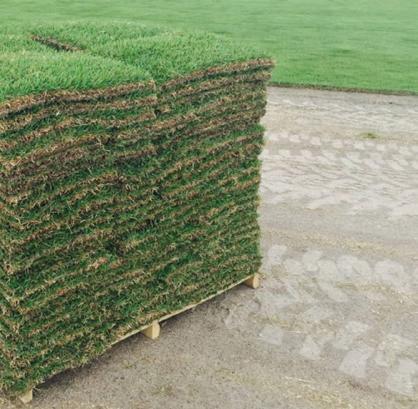
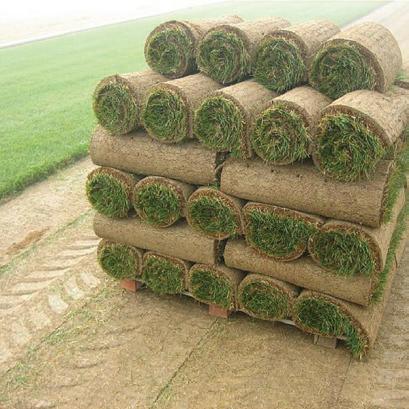




The Tennessee Turfgrass Association serves its members in the industry through education, promotion and representation. The statements and opinions expressed herein are those of the individual authors and do not necessarily represent the views of the association, its staff, or its board of directors, Tennessee Turfgrass Magazine, or its editors. Likewise, the appearance of advertisers, or Turfgrass Association members, does not constitute an endorsement of the products or services featured in this, past or subsequent issues of this quarterly publication. Copyright © 2024 by the Tennessee Turfgrass Association. Tennessee Turfgrass is published bi-monthly. Subscriptions are complimentary to members of the Tennessee Turfgrass Association. Third-class postage is paid at Jefferson City, MO. Printed in the U.S.A. Reprints and Submissions: Tennessee Turfgrass allows reprinting of material. Permission requests should be directed to the Tennessee Turfgrass Association. We are not responsible for unsolicited freelance manuscripts and photographs. Contact the managing editor for contribution information. Advertising: For display and classified advertising rates and insertions, please contact Leading Edge Communications, LLC, 206 Bridge Street, Suite 200, Franklin, TN 37064, (615) 790-3718, Fax (615) 794-4524.



